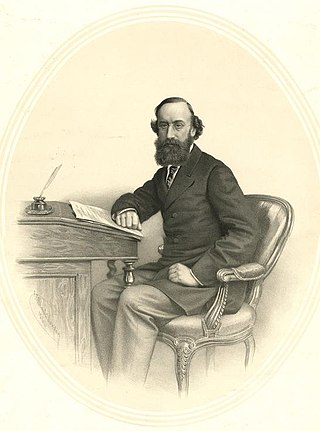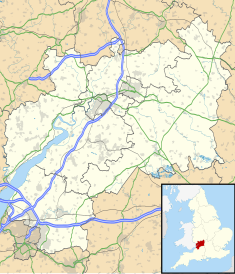
An arboretum is a botanical collection composed exclusively of trees and shrubs of a variety of species. Originally mostly created as a section in a larger garden or park for specimens of mostly non-local species, many modern arboreta are in botanical gardens as living collections of woody plants and are intended at least in part for scientific study.

The Wych Elm cultivar Ulmus glabra 'Camperdownii', commonly known as the Camperdown Elm, was discovered about 1835–1840 as a young contorted elm growing in the forest at Camperdown House, in Dundee, Scotland, by the Earl of Camperdown's head forester, David Taylor. The young tree was lifted and replanted within the gardens of Camperdown House where it remains to this day. The original tree, which grows on its own roots, is less than 3 m tall, with a weeping habit and contorted branch structure. The earl's gardener is said to have produced the first of what are commonly recognised as Camperdown elms by grafting a cutting to the trunk of a wych elm.

Earl of Ducie is a title in the Peerage of the United Kingdom. It was created in 1837 for Thomas Reynolds Moreton, 4th Baron Ducie.

Westonbirt, The National Arboretum is an arboretum in Gloucestershire, England, about 3 miles (5 km) southwest of the town of Tetbury. Managed by Forestry England, it is perhaps the most important and widely known arboretum in the United Kingdom.

Thornbury Castle is a Tudor castle in the town of Thornbury, in Gloucestershire, England, erected next to the parish church of St Mary. Construction was begun in 1511 as a further residence for Edward Stafford, 3rd Duke of Buckingham (1478–1521), of Stafford Castle in Staffordshire. It is not a true military fortress but rather an early example of a Tudor country house, with minimal defensive attributes. As at Richmond Palace in Surrey, the main ranges of Thornbury framed courts, of which the symmetrical entrance range, with central gatehouse and octagonal corner towers, survives, together with two less regular side ranges with many irregular projecting features and towers. It is now a Grade I listed building that is operated as a hotel.

Exton is a village and former civil parish, now in the parish of Exton and Horn, in the county of Rutland, England. The population of the parish was 607 at the 2011 census. On 1 April 2016 the parish was abolished and merged with Horn to form "Exton and Horn".
Samuel Sanders Teulon was an English Gothic Revival architect, noted for his use of polychrome brickwork and the complex planning of his buildings.

Oatlands Palace is a former Tudor and Stuart royal palace which took the place of the former manor ( of the village of Oatlands near Weybridge, Surrey. Little remains of the original building, so excavations of the palace took place in 1964 to rediscover its extent.

Theobalds House in the parish of Cheshunt in the English county of Hertfordshire, north of London, was a significant stately home and (later) royal palace of the 16th and early 17th centuries.

Tortworth is a small village and civil parish, near Thornbury in Gloucestershire, England. It has a population of 147 as of 2011. It lies on the B4509 road, which crosses the M5 motorway to the west of Tortworth.

Cassiobury Park is the principal public park in Watford, Hertfordshire, in England. It was created in 1909 from the purchase by Watford Borough Council of part of the estate of the Earls of Essex around Cassiobury House which was subsequently demolished in 1927. It comprises over 190 acres (77 ha) and extends from the A412 Rickmansworth Road in the east to the Grand Union Canal in the west, and lies to the south of the Watford suburb of Cassiobury, which was also created from the estate. The western part is a 62-acre (25.1 ha) Local Nature Reserve managed by the Herts and Middlesex Wildlife Trust. The park hosts the free, weekly timed parkrun 5 km event every Saturday morning at 9 am, starting on the field near the Shepherds Road entrance to the park, and finishing by the bandstand.

Westonbirt House is a country house in Gloucestershire, England, about 3 miles (5 km) southwest of the town of Tetbury. It belonged to the Holford family from 1665 until 1926. The first house on the site was an Elizabethan manor house. The Holfords replaced it first with a Georgian house, and then Robert Stayner Holford, who inherited Westonbirt in 1839, replaced that house between 1863 and 1870 with the present mansion which was designed by Lewis Vulliamy. He also remodelled the gardens, diverted the main road and relocated the villagers.

Woodchester Mansion is an unfinished, Gothic revival mansion house in Nympsfield, Gloucestershire, England. It is on the site of an earlier house known as Spring Park. The mansion is a Grade I listed building.

Henry John Reynolds-Moreton, 3rd Earl of Ducie, styled Lord Moreton between 1840 and 1853, was a British courtier and Liberal Party politician. He notably served as Captain of the Yeomen of the Guard from 1859 to 1866, and Lord Warden of the Stannaries from 1888 to 1908.
Colne Priory at Earls Colne, Essex was a Benedictine priory, initially a dependent cell of Abingdon Abbey, Berkshire. It was founded by Aubrey de Vere I and his wife Beatrice in or before 1111. One piece of research suggests that the original Abbot, Faritius, was appointed in 1101; he initially placed six monks at the site. Their eldest son Geoffrey had died at Abingdon about seven or eight years earlier and was buried there. On his deathbed, Geoffrey had bequeathed to Abingdon the church and lands at Kensington, Middlesex, and his parents and brothers had confirmed that grant, as had King Henry I.

HM Prison Leyhill is a category D men's prison located in the parish of Cromhall in Gloucestershire, England. His Majesty's Prison Service operates Leyhill Prison.

Henry George Francis Reynolds-Moreton, 2nd Earl of Ducie, styled the Hon. Henry Reynolds-Moreton from 1808 to 1837 and the Lord Moreton from 1837 to 1840, was a British Whig politician, agriculturalist and cattle breeder.
Henry Haughton Reynolds-Moreton, Lord Moreton DL, was a British Liberal Party politician.

Westonbirt School is a co-educational independent day and boarding school for boys and girls aged 11 to 18 located near Tetbury in Gloucestershire in South West England. Founded in 1928. The historical Westonbirt House is part of the school. Westonbirt Prep School is located within the 210 acre grounds of Westonbirt School.


















